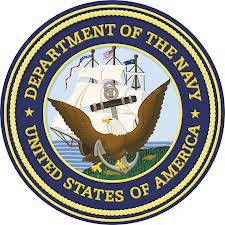Lockheed, Austal Respond to U.S. Navy Query on Small Warship Ideas
Lockheed Martin Corp and Australia's Austal on Thursday submitted their best ideas for the U.S. Navy's next small warship, as a Navy task force continues to reassess the future of its $34 billion Littoral Combat Ship (LCS) program.
The Navy last month asked U.S. and foreign weapons makers to submit cost and technical data on ship designs and weapons to inform the work of a task force that is due to report on various options by July 31, in time to help shape the Navy's fiscal 2016 budget request.
The Navy created the task force after Defense Secretary Chuck Hagel expressed significant concerns about the survivability and firepower of the current LCS ships, and ordered a pause in orders after 32 ships. The Navy has ordered 24 ships of the total 52 planned so far.
Lockheed submitted what it called "a low risk approach with several options" that would allow the Navy to evolve the current steel monohull design built by Lockheed for the LCS program, said Joe North, vice president of Littoral Ship Systems for Lockheed's Mission Systems & Sensors business.
The proposal includes a variety of options for new surface-to-surface missiles, launchers, radar and other equipment - all priced under $700 million - that the Navy can choose to pursue all at once or using a phased-in approach over the coming years, North said. Lockheed's LCS ships now cost about $460 million each.
North said Lockheed also provided details about a higher-end LCS variant it has offered to international buyers that has a bigger hull and includes an Aegis missile defense system. The cost of that option would exceed $700 million, he said.
"We're basically doing a spiral design that offers them different configurations, based on what they may want," he said.
He said the current design for Lockheed's monohull had 180 metric tons of space set aside for interchangeable equipment packages that could be used for permanent weapons systems.
The current class of ships was built to hunt do battle against mines, submarines and surface ships using interchangeable equipment packages, but officials have grown concerned that the ships also need some permanent weapons on board.
North said he was confident the Navy would conclude that it was "way too expensive" to start with a clean sheet design for a new small warship, and said such an effort would likely cost around $1 billion, and could result in a new class of warships that cost around $1 billion each.
North said Lockheed could start building the new variants as early as 2017, which would allow the Navy to begin modifying the existing LCS ships even before it reached 32 ships.
He said additional savings could be achieved, depending on the number of ships the Navy planned to order.
Austal, which is building an aluminum trimaran design for the Navy, had no immediate comment on the cost and technical details included in its response to the Navy's request for data.
It was not immediately clear which other firms responded to the Navy's request. The answers are due at the end of Thursday.
(By Andrea Shalal, editing by Gunna Dickson)












